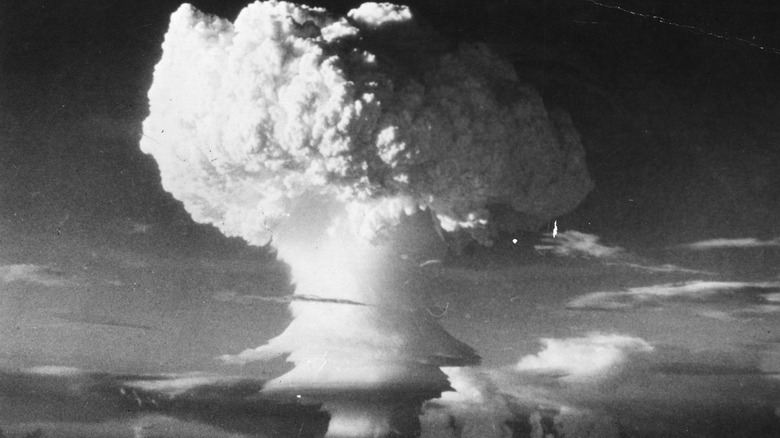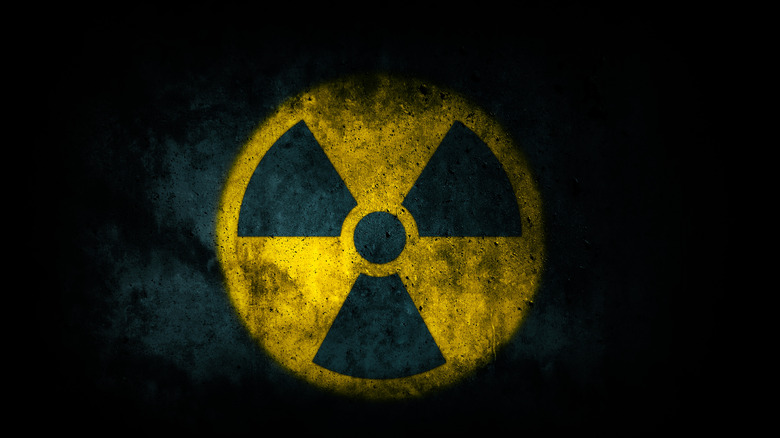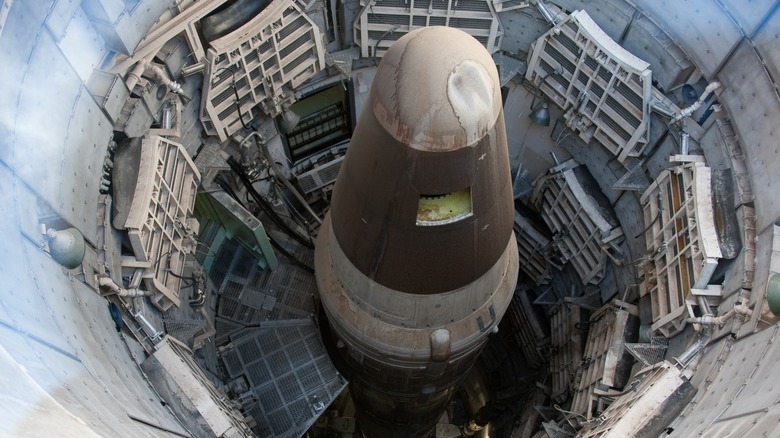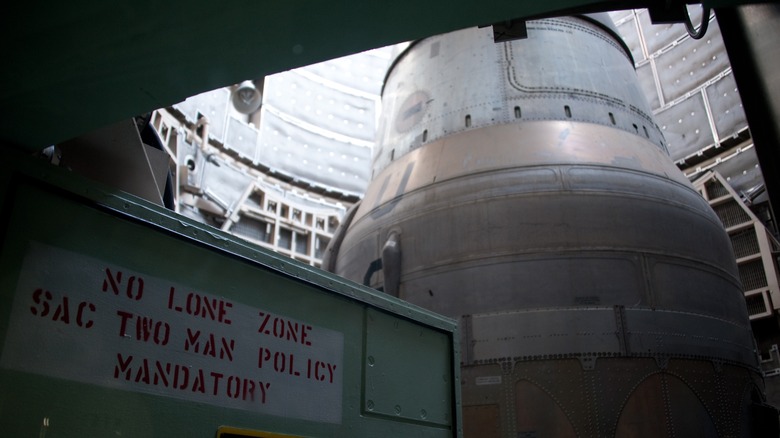What Happens When A Nuclear Weapon Is 'Retired'
A nuclear weapon was first deployed in July of 1945, during a U.S. test (via the Arms Control Association). Only a month later, two atomic bombs were dropped on Japan, killing between 130,000 and 215,000 people total, according to History. Since then, the destructive capabilities of nuclear weapons have only grown, with weapons like hydrogen bombs being added to the atomic arsenal, according to ICAN. Now, the most powerful nuclear weapons in the world have almost 40 times the explosive yield of the first atomic bombs, according to Andolu Agency.
But that doesn't mean that countries like the United States are holding on to a bunch of outdated atomic weaponry. Nuclear weapons are replaced with newer alternatives over time, according to the U.S. Department of Energy, while older weapons are dismantled and "retired." The retirement process aims to remove weapons that are unlikely to be needed, according to IPS News. Over time, the process has sometimes led to the reduction, year-on-year, in the total number of nuclear weapons worldwide. But what does the retirement process actually look like?
Who has nuclear weapons?
Currently, nine countries have nuclear weapons: Russia, with 6,257 nuclear weapons; the United States, with 5,550 nuclear weapons; China, with 350 nuclear weapons; France, with 290 nuclear weapons; the United Kingdom, with 225 nuclear weapons; Pakistan, with 165 nuclear weapons; India, with 156 nuclear weapons; Israel, with 90 nuclear weapons; and North Korea, with around 40-50 nuclear weapons (via the Arms Control Association). However, many of these countries have signed on to a nuclear nonproliferation treaty which has seen some nations, including the United States and Russia, downsizing their nuclear collections (via Inside Science).
However, some countries which don't technically have their own nuclear weapons still have access to them. Certain U.S., French, and U.K. weapons may be stored elsewhere in Europe, in NATO allied countries, according to the Center for Arms Control and Non-Proliferation. Once placed in the appropriate location, the weapons are stored underground until they are designated for deployment or retirement.
The retirement process for nuclear weapons
While the exact mechanisms and processes behind nuclear weapons are likely to vary from country to country, in the United States, older weapons that are no longer considered essential to the nuclear arsenal are retired (via IPS News). This is a natural part of the "life cycle" of a nuclear weapon, according to the Department of Energy. Typically, if a weapon is no longer needed for war — such as when a more sophisticated weapon is created in its place — it will be retired, says Robert Kelley, a fellow at the Stockholm International Peace Research Institute.
These retired weapons are sent to Texas, where the deconstruction process begins. The first part of the weapon to go are the fissile pits, the area containing the sensitive material which is agitated during the detonation process (via PBS). However, all weapons which are designated for retirement may not be immediately dismantled. Because the process is sensitive and time-consuming, there are likely many more weapons which have been designated for dismantlement than have actually been dismantled, according to IPS News. Still, these old warheads are effectively useless once they have been retired, regardless of whether or not they've been dismantled, according to Kelley.
Are new nuclear weapons still in production?
The U.S. stopped designing new nuclear weapons more than 30 years ago, according to the Derpatment of Energy. However, that doesn't mean that the U.S. is not still commissioning and constructing nuclear supplies. In fact, the U.S. continues to order nuclear bombers and other nuclear technology, according to Forbes. In early 2021, the U.S. commissioned a huge new nuclear missile, costing around $100 billion dollars, according to The Bulletin.
Other countries have gone further, expanding their own nuclear arsenals. Among these countries are North Korea, which obtained its first nuclear weapon in 2006 and has since continued to build up its nuclear arsenal, according to The Washington Post. Similarly, China has continued to stockpile more nuclear weapons, according to CNBC. While both countries still have many fewer nuclear weapons than either Russia or the United States, these growing arsenals may lead to overall growth in nuclear stockpiles worldwide, and some experts worry that another arms race may be on the horizon, according to IPS News.



